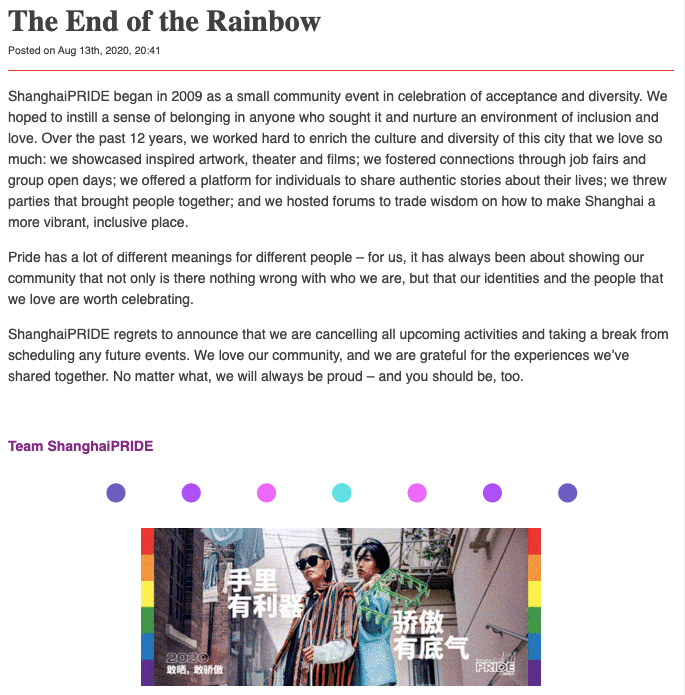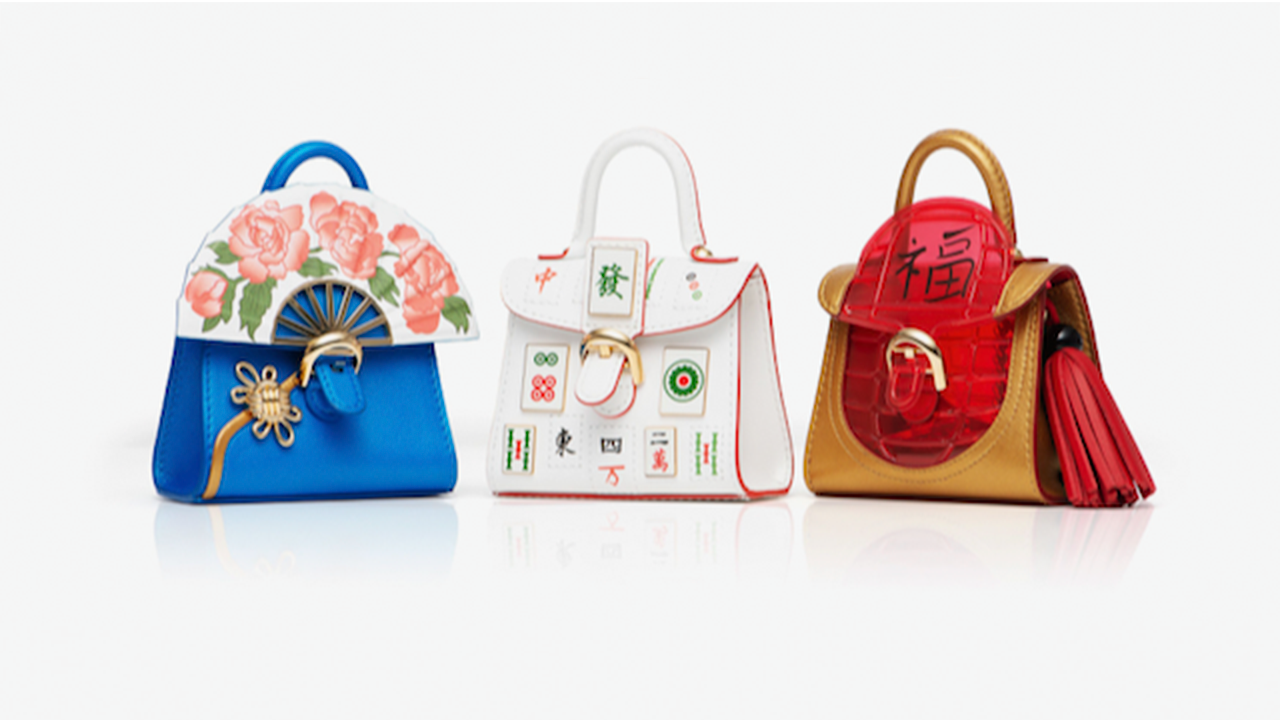Thanks to a global pandemic and a 21st-century cold war, Chinese culture has looked inward and is taking conservative turns on multiple fronts. By further suppressing LGBTQ+ and feminist activities while promoting traditional Confucian values, post-COVID China is committed to turning the clock back to a more conservative, and in theory, stable, time. But these ever-more stringent cultural policies will leave a deep and long-lasting mark on China’s Gen Z, which will also happen to be the main growth engine for global luxury and fashion soon. With the rise of conservatism in China, the liberal fashion world is likely to undergo profound changes over the years to come.
Like many other civic discourses, the debate over resurgent conservatism started on Weibo, a Chinese Twitter-like platform. In late August, a post published by public intellectual Zhou Xuanyi was widely circulated online. Zhou wrote, “the biggest glory of my generation is that — for the first time in Chinese history — a generation has to ask the next to be less conservative.” The post soon inspired a cascade of comments about the bizarre phenomenon of Chinese Gen Zers’ conservative tendencies. Older millennial netizens have coined the terms “digital feet-binding,” “cyber chastity-belt,” and “tech-enabled chastity archway” (数码牌坊,赛博猪笼,电子裹脚布) to describe Gen Z’s ideological backwardness in China’s modernized state.
The debate was a response to a recent series of social scandals in China. Following the government’s “zero food waste” campaign, a restaurant in Tianjin began to sell gendered menus that assign larger food portions to men. Then, a university in Guangxi, a southwestern Chinese province, suggested that female students “not expose much skin for public temptation” in its student safety guide. And now, to counter the country’s rising divorce cases and dropping birth rate, state officials have introduced a month of cool-down period for divorce requests and have proposed “more training on responsibility” for newlyweds.
By the end of August, the Shanghai Pride Festival, a hallmark of China’s progressive grassroots groups, announced a permanent shut down. To the surprise of many, online support for these topics mostly came from Gen Zers, who see the return to conservatism as a path toward China’s cultural autonomy from the West.
Unlike millennials, China’s Generation Z has grown up in a full-fledged luxury boom that grew alongside a tightening of cultural control. By getting less exposure to international media as well as being force-fed more nationalist propaganda, born-after-2000 youngsters are more likely to see progressive values, such as LGBTQ and women’s rights, as a betrayal of Chinese culture.
For global fashion, room for any LGBTQ+ discourse is gradually diminishing in Gen Z’s China. On August 10, French jewelry brand Cartier launched a Qixi-themed campaign video on Weibo featuring its signature “Trinity ring” with a gay-looking couple. Although there was no direct reference to the couple’s relationship, most audiences interpreted the image as an LGBT representation. However, on Cartier’s Tmall store page, the same “gay couple” image was dubbed with the caption “father and son.” This detail ended up inspiring many online comments, most of them sympathizing with the brand’s creative efforts to sneak around China’s censorship on homosexual content.
As the online comments piled up, Cartier’s campaign event got picked up by several state media, including Guancha, whose reporting framed the wordplay as the brand’s sarcastic, condescending attitude towards Chinese people. A few days after the campaign release, Cartier took down the image with the “father and son” caption from its Tmall store. The brand has not issued any statement that acknowledged the controversy thus far.

There has been silence across the board among China’s LGBTQ+ community. In April, Jing Daily reported on China’s then-burgeoning LGBTQ+ fashion scene. Just six months later, most of the reported initiatives are close to obsolete. On August 13, the Shanghai Pride Festival issued an official statement regarding its permanent shutdown yet didn’t specify any cause. With the title “The End Of The Rainbow,” the declaration stands in sharp contrast with the colorful Pride fashion ad still on the site.

Similar to LGBTQ+ discourse, feminist messages about gender equality are facing a harsher crackdown today. Believing in the notion that a traditional family is the foundation of a stable society, the Chinese mainstream media has seen both calls for women’s and LGBTQ+ rights as a threat to the status quo. During a July episode of the popular TV show Sisters Who Make Waves, a girl band's song performance had the lyrics removed. Words containing direct body references, like “curvy body (前凸后翘)” and “loose woman (放荡),” were deemed too explicit and removed from the show. Although the episode generated a pushback on social media and angry netizens started to circulate the performance clip with full lyrics re-inserted, the episode showed an alarming new level of state control over feminist issues.
A senior media sales manager at a Shanghai-based agency, who asked to go by “Claire W” for this article, said that media censorship started growing around 2018 and hit a new high in the post-COVID-19 era. “The official pressure to air advertising with ‘positive energy’ has intensified this year, due to COVID,” she said. “Back in 2016, it was still possible to do a project that addressed leftover women as SKII did. Doing something similar today [would be] impossible. I don’t think that ad would pass the censor now.” The SKII’s leftover women ad was one of the first media representations aired in China to acknowledge women who chose not to get married but were happy with their decisions. But at a time when mainstream voices are increasingly trying to coerce women to marry and have families, women’s choices feel like they’re narrowing.
Meanwhile, more patriotism has appeared in China’s luxury and fashion scene. Last month, the Belgian luxury house Delvaux launched a limited-edition handbag collection named “China Dream,” an official political term that describes an ideal Chinese citizen’s nationalist ethos. The term “China Dream” used to pop on in national celebration songs, textbooks, state TV shows and has now made its way to luxury handbags.
Today, social media is programmed to infiltrate users with messages encouraging them to unflinchingly devote themselves to their family and state,” Claire explained. “It is called ‘positive energy,’ and now every big-budget campaign needs to involve positive energy to pass the bar.”
To the global fashion industry, these recent events might seem minor, but China’s fashion community immediately saw them for what they were: the early signs of erasing liberal values and the assertion of traditional gender norms. In each case, the state is redefining fashion’s relationship with China’s young audience by placing the nationalist-conservative ideal at the center of a trend (while filtering off progressive messages that aren’t related to nation-building).
Over the past two decades, China’s consumer boom was believed to be a vehicle for steady social and cultural liberalization. The thinking was that, as the economy advances, more fashion ads touting inclusivity, gender equality, and body positivity would be inevitable. But in the post-COVID era where stability is now the priority, these ideas are unraveling. Therefore, fashion, a medium that has long embraced liberal causes, needs to adopt a more subtle, if not silent, mode of communication to assert its beliefs.
